Weapons
Although the production of weapons had always been flourishing in the Kingdom of Naples since the time of the Normans, it experienced a real revival only when Charles of Bourbon ascended the Throne in 1734, after the period of Habsburg viceroy. This sector then showed a clear “Spanish” predominance – the «taking root of the domestic production, proud of national and international competitiveness also in the sector of quality» (A. PARLATO, Le armi al tempo dei Borbone, in: AA.-VV., Le armi al tempo dei Borbone, by S. Abita, ESI, Naples 1998, p. 14.).
Main weapon factories
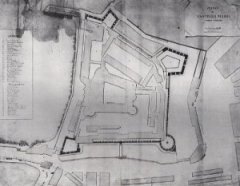
The list of the main factories and corps started by Charles and his descendants is sufficient evidence of the importance of this art in the Bourbon kingdom.
In Naples and elsewhere, the heart of military manufacture was the urban triangle formed by the Palace of Capodimonte (where the Royal Steel Factory was located), the Naval Dockyard and the stronghold of Castelnuovo (with its Artillery Arsenal and its workforce of 500 military and civil workers, bronze Foundry and Weapon Assembly).
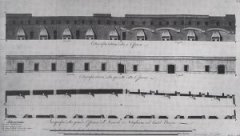
Other important places were the Factory of the Royal Albergo dei Poveri, the Royal Factory of Barrels in Poggioreale and the Royal Weapon factory in Torre Annunziata (with a Royal Powder Magazine), the Powder Magazine of Arenaccia, the Powder Magazine of Scafati (See R. PARISI, Salnitriere e polveriere, in: ibid., pp. 57 on. Many powder magazines were restored, among which those of Castel dell’Ovo, Capodichino al Campo di Marte, Capua, Caserta, etc.) and the Mechanic Factory of Pietrarsa in Portici.
In the Kingdom, worthy mentioning are the Royal Factory of Piastrinari in Lancusi near Salerno, The Factory of Sidearms in Sparanise, the Royal Pyrotechnical Factory of Capua (others were located in Gaeta and in Sicily), the Royal Iron Foundries and Factories of Mongiana, an arsenal in Palermo (See G.E. RUBINO, L’artiglieria napoletana e le fabbriche d’armi al tempo di Carlo Filangieri di Satriano, in: ivi, p. 20 e sgg.)
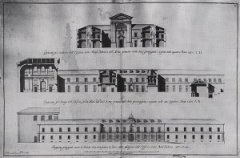
The industrial and seel production of the Kingdom of Naples was amongst the first in the world.
In the production sectors of the Royal Factories in Pietrarsa, between Naples and San Giorgio a Cremano, the number of workers exceeded 1,000 units whereas the workers of the Ansaldo di Sampierdarena in Genoa were just about 500.
Individual Armament in the Bourbon Army
The first weapon factory established by Charles of Bourbon was the one in Torre Annunziata, already in operation in 1760. Until then, and even in the years in which Tanucci was Prime Minister (he never cared much about the military sector of the Kingdom), weapons were often imported from abroad (we know about 15,000 rifles imported from Germany) [See G. FIORENTINO, Cenni sull’armamento individuale dell’esercito borbonico 1734-1860, in: ivi, pp. 89 e sgg].
G. Fiorentino wrote that «(…) years ago, in the magazines of Capodimonte, an infantry rifle of that time was found, that was similar to the model 1754 used by the Austrian army, but whose powder ignition mechanism was typical of the Neapolitan weapons of 1700, in a miquelet style, with a side flame damper at the touch-pan just like the Habsburg rifle. This weapon was very likely used between mid ’80s and the end of 18th century» [Ivi, p. 90]. Also the cavalry was equipped with a big and heavy gun similar to its Austrian equivalent.
«Infantry officers were equipped with swords having a hilt typical of that time and often bearing words of praise to the sovereign on their blades. The soldiers were equipped with a rifle, sleeve and ring bayonets to be fixed to the gun and stopped by a turning ring thanks to a stopper located at the end of the gun. The grenadiers had a dagger hanging from the left side of their straps, and these daggers had a cross-shaped hilt and the pommel in the shape of a head, a dog, a lion. The petty officers were equipped with a longer and larger dagger, with a big pommel in the shape of a lionhead. The Royal Hunters, besides the bayonet, had a big knife with a bone hilt and a flat blade hanging from their belt and this knife was engraved with the three golden lilies trademark of the Royal Weapon Factory» [Ibidem].
There was also the Royal Macedonia regiment, formed by Albanians and Macedonians wearing uniforms similar to their country’s clothes and a long and heavy sword hanging from their belt.
The two companies of Halberdiers of the Royal Palace – one in Naples and the other in Palermo – were equipped with a sword and a short halberd engraved with the coat of arms of the Bourbon family.
In 1788 a new rifle was launched, a carbine for the Hunters, another type of carbine for the cavalry and guns for mounted troops. In 1800 Ferdinand IV, once restored to the Throne after the short parenthesis of the Neapolitan Republic, issued new rules on clothes and armaments foreseeing the use of the “canguarro”, a weapon of Turkish-Caucasian origin.
In the previous years, the artillerymen were already equipped with «long and flat daggers with beautiful bronze hilts bearing the symbol of the armed force – two crossed guns on top of a pyramid of gun balls and on each side two lilies – whereas the pommel was in the shape of a lionhead» [Ivi, p. 91].
Also the grenadier companies of the regiments and the Hunter regiments were equipped with a flat blade dagger having a bronze hilt terminating with a lionhead (in 1833, these daggers where given also to the fire brigade of Naples).
After 1815 Ferdinand (by then Ferdinand I as King of the Two Sicilies) put together the two armies, the Neapolitan and the Sicilian, and this initially caused huge differences in the armaments, but then he decided to uniform it and adopt the French model for the army.
Then four types of rifles were chosen: « the 40 inches rifle (40′), 1,47 m. long, given to the fusilier companies of the line infantry regiments and to the Hunter battalions; the 38′ rifle, 1,415 m. long, given to the grenadiers and hunter companies of line infantry regiments; the 28′ musket with long and short butt and a length of 1,145 metres, given to the mounted Body Guards, the mounted and infantry Gendarmery, the artillery and Engineering, the military colleges, the veterans; the 22′ rifle, long 95 cm., given to the line cavalry.
All infantry troops, equipped with rifle or musket, had sleeve and ring bayonets. Infantry regiment of the Royal Guard, Grenadier companies of line infantry regiments, infantry gendarmes, Artillerymen, Engineering battalions, military colleges, the veterans and the four Swiss regiments were also equipped with infantry briquet sabre (…) Hunter and Fusilier companies of line infantry regiments and Hunter battalions were equipped just with the bayonets» [Ivi, p. 92].
During the Restoration, the generals largely adopted the scimitar with an ivory hilt, after the Neapolitan fashion took from Egypt; if not so equipped, they had bent swords with embroidered sheath, whereas after 1830 the mounted Body Guards adopted a sword similar to the Napoleonic sword for dragons, called “sabre de bataille”. Other officers got different types of straight swords.
Ferdinand II paid great attention to the military world. After establishing two new cavalry regiments equipped with one lance and two guns, in the ’40s he updated the firearms and at the same time the Navy executive equipped the Corp of Navy Gunners with a new weapon. The Hunter battalions were given a more precise 32′ rifle, a “deadly weapon in the hands of expert soldiers”, that was first used in battle in 1849 during the campaign against the Roman Republic [Ivi, p. 95].
That same year, a new cavalry regiment was established, the mounted Hunters regiment, equipped with a new 38′ percussion rifle, guns and a slightly bent sabre.
At the beginning of the ’50s, new 40′ and 50′ back-spring rifles were built for the infantry in Torre Annunziata and Mongiana.
Other firearms were introduced in the last years of the Kingdom until 1860, whereas infantry officers changed their model of sabre and adopted the 1845 French model (other corps used previous models).
However, weapon imports from abroad were never stopped in a definitive way. [Ivi, pp. 96-97].
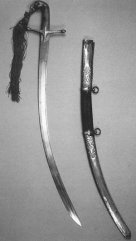
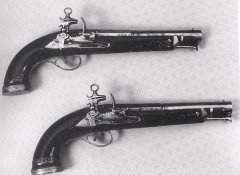
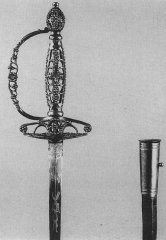

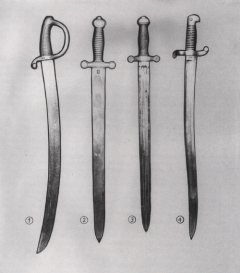
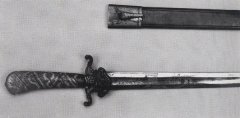



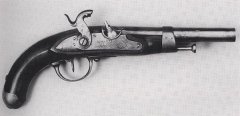
Heavy Artillery
After 1846, regularly used guns were: 33 and 24 shore guns; 24, 16 and 3, 3½ and 4 English inches guns; 2, 2½ rockets, 12 and 6 field guns; 32, 24 and 22 carronades; 30 carronade gun; Paixhans-like 8 howitzers for coast and navy corps; 117 and 60 howitzer guns for the navy; 8 howitzers for sieges; 6 and 5-6-2 howitzers for mountain batteries; 12 and 8 mortars; 13 petraries; 3, 3½ and 4 English inches rockets; 2, 2½, 2½ field rockets.
80, 117 and 60 howitzers, carronades, coast and navy guns were made of melted iron, the other guns were of bronze in an alloy of copper and tin (100 to 11). Rockets had a range exceeding 2000 toises (1 toise = about 1,94 metres), superior to that of cannons.





